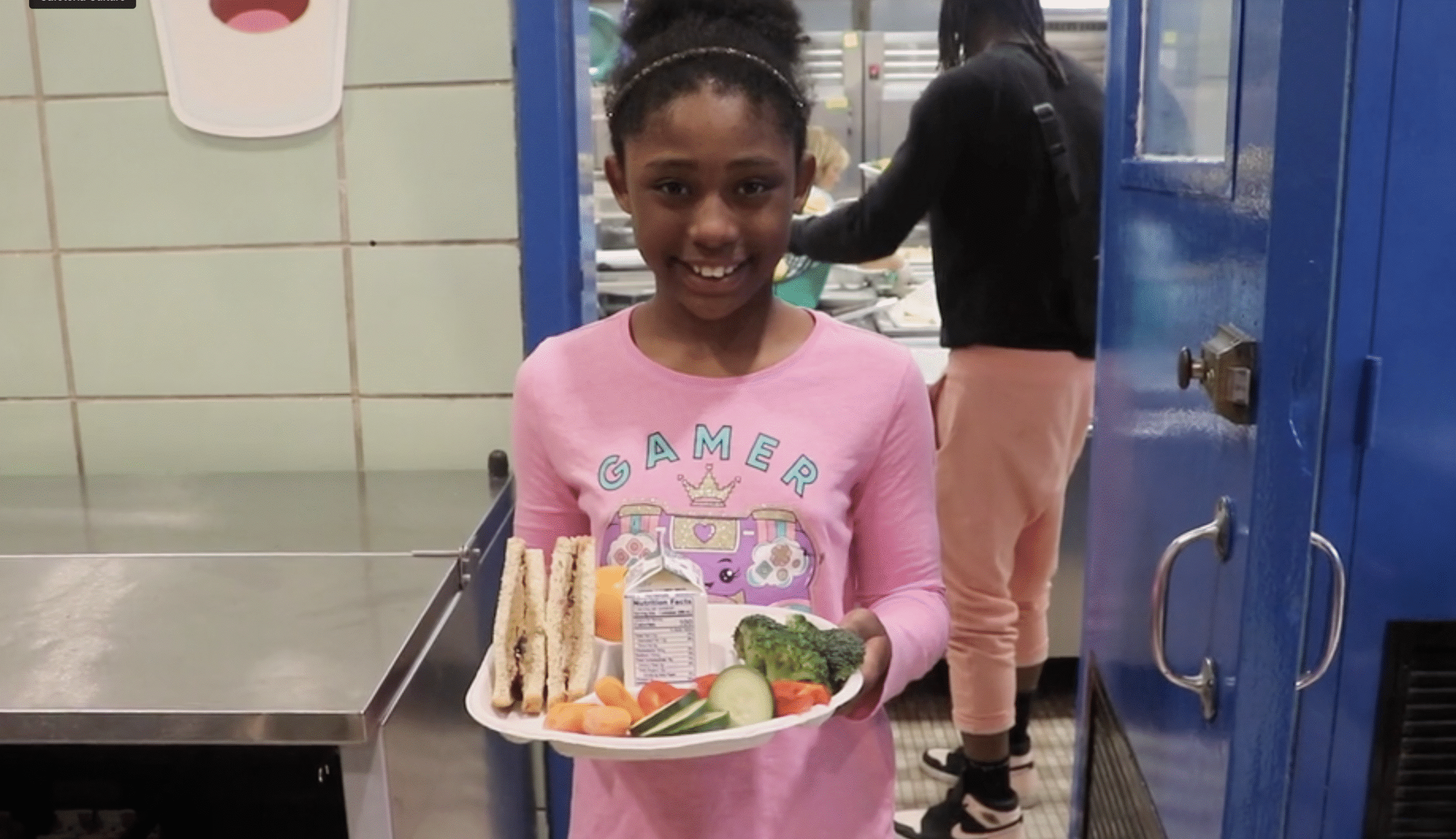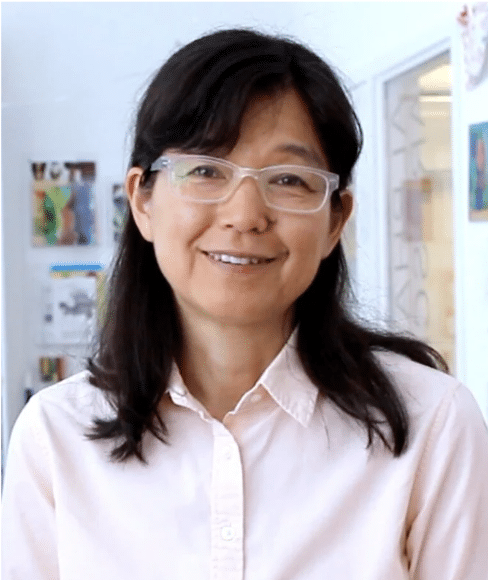
| For Immediate Release: November 17, 2025Contact: Cafeteria Culture, Marjorie Duverge, (347) 807-4036, marjorie@cafeteriaculture.org New York, NY, Nov 17, 2025 – In their continuing effort to free school cafeterias from single-use plastics, Cafeteria Culture announces the Seventh Biannual Plastic Free Lunch Day (PFLD) for a full week of cafeteria plastic reduction action, November 17-21, 2025 – part of the growing global movement to ditch single-use plastics. The PFLD concept was developed by Cafeteria Culture, an environmental education nonprofit, and a group of NYC Public School Fifth Graders in Red Hook, Brooklyn who studied plastic pollution with Cafeteria Culture for two years. After discovering a shocking amount of single-use plastics in their school lunches, the students designed and carried out the first PFLD, reduced school lunch waste by 99%, and launched the PFLD movement, as documented in the award-winning 2019 movie Microplastic Madness. To date, PFLD has eliminated an estimated 30 million plastic items and has reached 4,103 schools nationwide. School cafeterias, which serve 7.35 billion meals a year (often with 7-10 single-use plastics in each meal), generate billions of single-use plastics, for which there is no effective waste management strategy. As the NYC Fifth Graders discovered, school and home lunches abound with plastic utensils, straws, plates, pre-packaged food cups, chip bags, and condiment packets. “Students at PS 15 Patrick F. Daly Magnet School for the Arts, right here in Brooklyn, started Plastic Free Lunch Day, because they saw that plastics were harming our environment and that the cafeteria could be a catalyst for meaningful change,” said Chris Tricarico, Senior Executive Director of NYC Public Schools’ Office of Food and Nutrition Services. “It brings us great pride and joy to see our students inspire a national movement to create a more sustainable future.” “In NYC Public Schools, PFLD efforts have led to a reduction in single-use plastic items served in everyday cafeteria service. The average number of plastic items served per school lunch is now down from 5.7 in 2022 to just 1.8 in 2025. It is our hope that other large school districts will follow this model nationwide, bringing PFLD practices into their daily cafeteria food service.” said Atsuko Quirk, Cafeteria Culture Executive Director and Co-Founder. “Students, the clients of school food, are taking real-life relevant climate action, resulting in game-changing institutional change that tackles the seemingly intractable issues of plastic waste and equity.” PFLD is a student action response to plastic’s chemical and particle pollution and its effect on the climate. The world produces over 400 million metric tons of plastic each year, most of which is throw-away single-use plastics. As described in Cafeteria Culture’s Microplastic Madness, plastics break down into long-lived tiny particles, which travel through air, soil, and water, and accumulate in humans and other species, threatening youth and future generations. “Plastic Free Lunch Day is a golden opportunity for New York City and large school systems across the nation to speed the reduction of climate-destroying single-use plastics from school food service,” said Eric Goldstein, NRDC Senior Attorney and Director, NYC Environment, People & Communities Program. “Cutting back on single-use plastics makes sense because it cuts waste disposal costs while reducing health and environmental threats from exposure to plastic’s toxic constituents. And there are no better emissaries than our young students to send the message to government decision-makers that the best time to implement more environmentally sensible policies in our schools is right now.” Students who eat off of plastic foodware or out of plastic packaging are repeatedly exposed to plastic’s toxic chemical constituents, known obesogens, neurotoxins, and reproductive toxins. “Besides the known effects of plastics on our planet, children are uniquely vulnerable to the effects of chemicals used in plastic, particularly because of the crucial role of hormones in our bodies for so many biological functions. That’s why this Plastic Free Lunch Day is so important,” said Dr. Leonardo Trasande, MD, MPP, the Jim G. Hendrick MD Professor, Director of the Division of Environmental Pediatrics and Vice Chair for Research in the Department of Pediatrics at NYU School of Medicine. Plastic, which is made from fossil fuels, is a dirty industry with a long-lived toxic and inequitable legacy. The industry hides its heavily polluting fossil fuel extraction and plastics manufacturing and disposal sites (waste transfer stations, incinerators, and landfills) in urban and rural low-income communities and communities of color, subjecting generations to acute and chronic disease caused by fossil fuel and plastic chemical pollution. These are the same communities that are most vulnerable to extreme weather events caused by plastic-fueled climate change. Yet, despite plastic’s increasing threat to current and future generations, the plastic industry has doubled production since 2000 and is on target to double again by 2040. Because one plastic free action leads to another, PFLD provides an immediate, tangible, and repeatable way for students and communities to reclaim a healthy and sustainable future. PFLD resources for educators, students, and school food service teams are available on the Cafeteria Culture website, PlasticFreeLunch.org. Students, teachers, and schools everywhere are invited to take part in this exciting day of action. These include our Plastic Free Lunch Day Toolkit, Microplastic Madness Toolkit, and Know What We Throw Toolkit. About Cafeteria Culture Cafeteria Culture is a BIPOC, woman-led, environmental education nonprofit based in New York City’s Lower East Side. At Cafeteria Culture, we ignite student leadership to drive systemic change – starting in the school cafeteria, where every student has equal access. Since 2009, our hands-on programs have empowered youth in frontline communities to tackle food waste and plastic pollution through science, civic action, media, and art, while exploring local composting to increase community resilience. We serve 2,000 students annually from marginalized communities of color, living primarily in shelters and public housing, creatively nurturing tomorrow’s environmental leaders. Our goal is to transform cafeterias into climate action hubs. We pilot hyper-local solutions with students and scale proven models to drive equitable, systemic change toward zero waste. In our interdisciplinary programs, students collect data to support their compelling storytelling – through art, video, and direct advocacy – building leadership, critical thinking, and problem-solving skills. Cafeteria Culture’s mission is to eliminate plastic waste and reduce or divert food waste in school cafeterias while working in partnership with students from environmental justice communities. Among its many accomplishments, Cafeteria Culture catalyzed the elimination of styrofoam trays from all NYC Public Schools in 2018, produced the award-winning student-led film Microplastic Madness in 2019, initiated the Plastic Free Lunch Day movement in 2022, and is currently developing and testing Mindful Choice Meals, a school cafeteria solution for food waste with increased choice in the serving line and local composting partnerships.Please do not hesitate to reach out with any questions. Sincerely,Atsuko Quirk, Executive Director  REFERENCESSchool Nutrition Association, (2023), https://schoolnutrition.org/about-school-meals/school-meal-statistics/.(4.9 billion lunches and 2.45 billion breakfasts are served annually by schools participating in the National School Lunch and Breakfast programs.)Geyer R, Jambeck JR, Lavender Law K, “Production, Use, and Fate of All Plastics Ever Made,” Science 3 no. 7 (Jul. 2017), https://advances.sciencemag.org/content/3/7/e1700782. (Only 9% of all plastics ever made have been “recycled” and only .1% have been recycled more than once; 12% have been incinerated; 79% are landfilled or lost to the environment, i.e., end up in the ocean.)United Nations Environment Programme, “Our Planet is Choking on Plastic” (2022) https://www.unep.org/interactives/beat-plastic-pollution/. (Globally, about 400 million metric tons of plastic are produced annually, projected to double by 2040.) Karasik R, Lauer NE, Baker, A et al., “Inequitable Distribution of Plastic Benefits & Burdens on Economies and Public Health,” Frontiers in Marine Science 9 (Jan. 10, 2023), https://doi.org/10.3389/fmars.2022.1017247. (Adverse health impacts from plastic production, use and disposal disproportionately burden low income communities and communities of color.)Vandenberg J, Ota Y, “Towards an Equitable Approach to Marine Plastic Pollution,” Ocean Nexus (2022), available at https://drive.google.com/file/d/1SEz8y7FJrYUw0s7SZ3flLhZnf6Ut-Pw9/view. (Marine plastic pollution flows from high income areas to low income areas locally and globally). Zimmermann L, Bartosova Z, Braun K et al., “Plastic Products Leach Chemicals That Induce In Vitro Toxicity Under Realistic Use Conditions,” Environmental Science & Technology 55 no. 17 (Sept. 7 2021), https://www.ncbi.nlm.nih.gov/pmc/articles/PMC8427741/. (This study tested 8 different polymers in 24 different products and found thousands of migrating (leaching) toxic chemicals.)Zhang X, He X, Pan D et al., “Effects of Thermal Exposure to Disposable Plastic Tableware on Human Gut Microbiota and Metabolites: A Quasi-experimental Study,” Journal of Hazardous Materials 462 (Jan. 15, 2024), https://doi.org/10.1016/j.jhazmat.2023.132800. (Plastic tableware used for a month was associated with toxic gut, nervous system, metabolic and inflammatory effects.)Zimmermann L, Dombrowski A, Völker C, Wagner M, “Are Bioplastics and Plant-Based Materials Safer Than Conventional Plastics? In Vitro Toxicity and Chemical Composition,” Environment International 145 (Oct. 17, 2020), https://doi.org/10.1016/j.envint.2020.106066. (Compostable plastics are as toxic to humans and the environment as conventional plastics).Tisler S, Christensen JH, “Non-target Screening for the Identification of Migrating Compounds From Reusable Plastic Bottles into Drinking Water,” Journal of Hazardous Materials 429 (May 5, 2022), https://doi.org/10.1016/j.jhazmat.2022.128331. (Reusable plastic water bottles release thousands of toxic chemicals into water after 24 hours and at room temperature). Geueke B, Phelps DW, Parkinson LV, Muncke J, “Hazardous Chemicals in Recycled and Reusable Plastic Food Packaging,” Cambridge Prisms: Plastics (May 22, 2023), https://doi.org/10.1017/plc.2023.7. (Reusable and recycled food packaging releases toxic bioaccumulative plastic endocrine disruptors, neurotoxins and carcinogens into food and drink). Danopoulos E, Twiddy M, Rotchell JM, “Microplastic Contamination of Drinking Water: A Systematic Review, ” PLoS One 15 no. 7 (Jul. 2020), https://journals.plos.org/plosone/article?id=10.1371/journal.pone.0236838. (Microplastics are found in all water sources including tap and bottled water).De Souza Machado AA, Kloas W, Zarfl C et al., “Microplastics as an Emerging Threat to Terrestrial Ecosystems,” Global Change Biology 14 no. 4 (Jan. 13, 2018), https://doi.org/10.1111/gcb.14020 .(Microplastics are found in soil and harm soil organisms.)Kabir MS, Wang H, Luster-Teasley S et al., “Microplastics in Landfill Leachate: Sources, Detection, Occurrence, and Removal,” Environmental Science & Ecotechnology (Oct. 16, 2023), https://doi.org/10.1016%2Fj.ese.2023.100256. (Microplastics are found in landfill leachate.) Brahney J, Mahowald N, Prank M et al., “Constraining the Atmospheric Limb of the Plastic Cycle, PNAS 118 no. 16 PNAS (Apr. 12, 2021), https://doi.org/10.1073/pnas.2020719118. (Microplastics are found in the air; the atmosphere is a major route of global microplastics transport.) Fan W, Salmond JA, Dirks KN et al., “Evidence and Mass Quantification of Atmospheric Microplastics in a Coastal New Zealand City,” Environmental Science & Technology 25 no. 24 (Dec. 2, 2022), https://doi.org/10.1021/acs.est.2c05850. (In one year, the equivalent of 3 million plastic bottles worth of microplastics dropped out of the air and onto Auckland, NZ.)Leslie HA, van Velzen MJM, Brandsma SH et al.,”Discovery and Quantification of Plastic Particle Pollution in Human Blood,” Environment International 163 (May 2022), https://www.sciencedirect.com/science/article/pii/S0160412022001258. (Microplastics are found in human blood).Jenner LC, Rotchell JM, Bennett RT et al., “Detection of Microplastics in Human Lung Tissue using μFTIR Spectroscopy,” Science of the Total Environment 831 (July. 20, 2022), https://www.sciencedirect.com/science/article/pii/S0048969722020009?via%3Dihub. (MIcroplastics are found in the lungs of living humans).Yang Y, Xie E, Du Z et al., “Detection of Various Microplastics in Patients Undergoing Cardiac Surgery,” Environmental Science & Technology 57 no. 30 (Jul. 13, 2023), https://doi.org/10.1021/acs.est.2c07179. (Microplastics are found in human heart tissue).Danopoulos E, Twiddy M, West R, Rotchell JM et al., “A Rapid Review and Meta-Regression Analyses of the Toxicological Impacts of Microplastic Exposure in Human Cells,” Journal of Hazardous Materials (Nov. 2021), https://www.sciencedirect.com/science/article/abs/pii/S0304389421028302?via%3Dihub. (Microplastics harm human cells and tissues by inflicting mechanical damage).Wiesinger H, Wang Z, Hellweg S, “Deep Dive into Plastic Monomers, Additives, and Processing Aids, ” Environmental Science & Technology 55 no. 13 (June 21, 2021), https://pubs.acs.org/doi/10.1021/acs.est.1c00976. (Over 10,000 chemicals are used to make plastic, most of which are unknown and untested). |